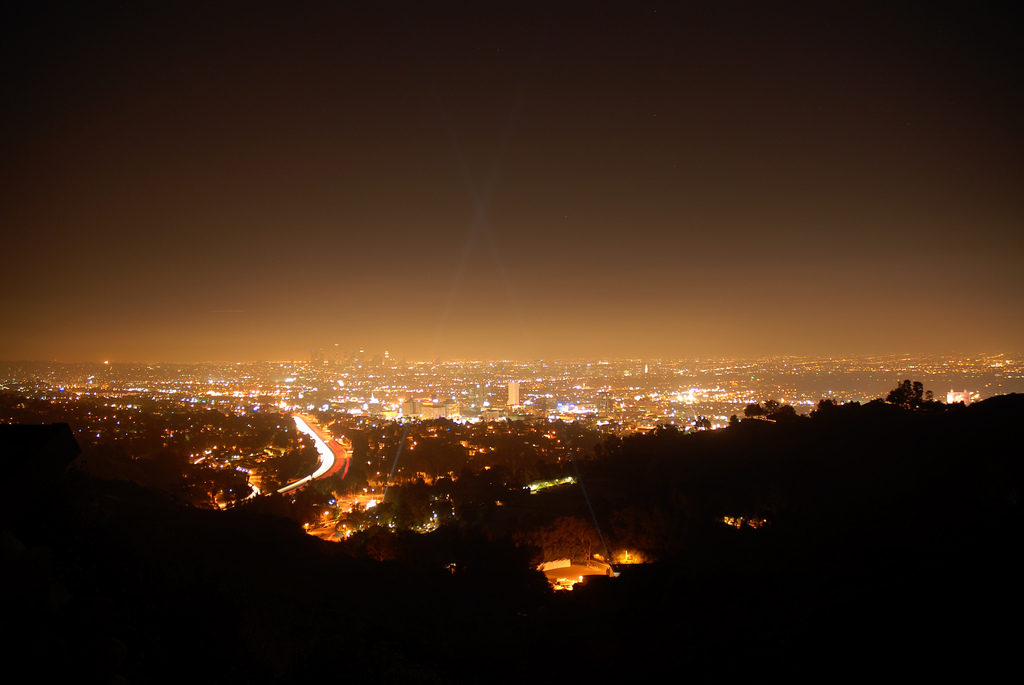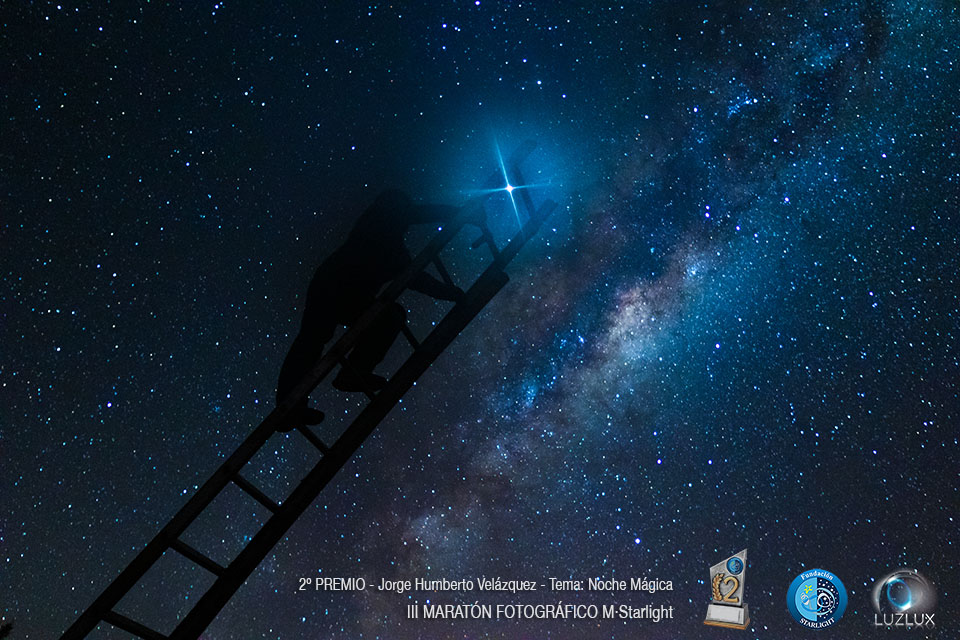Science magazine publishes an article by the director of the Starlight Foundation on the effects of light pollution on astronomy
Analysis of Dr. Antonia Varela's article "The increasing effects of light pollution on professional and amateur astronomy".
2023 / 06 / 23

The starry sky has been a source of inspiration throughout human history. Astronomy has been a common element in all cultures and civilizations, used to establish calendars, navigate and discover new lands, and drive numerous scientific and technological advances.
An article signed by Antonia Varela, director of the Starlight Foundation and researcher at the Instituto de Astrofísica de Canarias, and published in a special issue of the prestigious journal Science, analyzes how light pollution is making it increasingly difficult for professional and amateur astronomers to observe the night sky.

The impact of light pollution
Eighty-three percent of the world's population lives under light-polluted skies, the article notes; 23% of the world's land surface between 75°N and 60°S is light-polluted, and this figure is growing at a rate of 2% per year, doubling in about 35 years.
Worldwide, light pollution is increasing at an estimated rate of 9.6% per year, reducing darkness everywhere, even at the most remote observation sites. Increasing levels of light pollution caused by artificial nighttime lighting (ALAN) are erasing the stars from our skies. This degradation will leave a legacy with scientific, cultural, environmental and aesthetic implications.
Astronomical observations, Varela continues, require dark skies, and any sky glow can attenuate the faint signal of astronomical objects, preventing their detection. This problem is exacerbated for fainter astronomical objects or when observing with the naked eye. Because light pollution is generally worse in urban areas with high levels of economic development, dark skies are now largely confined to rural areas, often in economically impoverished regions that are at risk of depopulation. In some of these places, access to dark skies is the basis for sustainable local economic development through star tourism, also known as astrotourism. Others have been chosen to host the large telescopes of professional observatories.
Artificial light at night, radio interference, and the deployment of satellite constellations are increasing rapidly. All of this has a negative impact on astronomical observations, limiting scientific discovery, cultural connections to the night sky, and opportunities for astrotourism.
 Light pollutionLight pollution/ Source: Turismodeestrellas.com
Light pollutionLight pollution/ Source: Turismodeestrellas.com
Light pollution at astronomical observatories
Ground-based astronomical observations continue to drive important, high-impact discoveries in astrophysics and fundamental physics. They are often essential for interpreting observations from space telescopes. But, as the IAC astrophysicist explains, two-thirds of major professional observatories are affected by light pollution at levels that exceed the International Astronomical Union's (IAU) target of a 10% increase in radiation above expected natural levels.
Recognizing their importance to the local economy, some governments of regions hosting astronomical observatories have enacted laws to limit light pollution, such as the 1988 Sky Law of the Canary Islands to protect observatories on the islands of La Palma and Tenerife. Similar regulations have been enacted in other areas, including Chile and Hawaii. However, the growing impact of light pollution on observatories shows that existing regulations are not enough to stop the ongoing damage.
 Observatorio Roque de los Muchachos, La Palma/ Credit: LuzLux
Observatorio Roque de los Muchachos, La Palma/ Credit: LuzLux
To do this, it is necessary to reduce, halt and then reverse the growth of ALAN at its main sources (human population, agricultural and industrial centers) within the next decade. The IAU recommends that the total ALAN contribution (quantifiable with sky brightness instruments and theoretical models) be kept well below 10% of the natural dark sky level at 45° elevation in any azimuthal direction.
Where such regulations have been implemented, they have resulted in energy and economic savings, as well as reductions in greenhouse gas emissions. Public administrations hosting astronomical observatories are aware of the importance of protecting the night sky for science and for the benefit of the local economy.
Satellite Constellations
On the other hand, the Science article continues, the increasing and rapid deployment of large numbers of satellites in low-Earth orbit (LEO) has had an unexpected impact on astronomy. Although these so-called constellations, or megaconstellations, have the legitimate goal of providing communications access to remote areas, they are having a detrimental effect on the scientific community, as constellations interfere with optical and infrared astronomy due to their brightness and the number of spacecraft involved.
With plans for up to 400,000 satellites in such constellations by 2030, thousands will be visible from anywhere at any time. Up to 30% of a large telescope's wide-field exposures would be lost during the early evening and pre-dawn hours, and nearly 50% of twilight exposures would be contaminated.
In addition, these satellite megaconstellations produce a diffuse sky glow due to sunlight scattered by satellite debris. Assuming 65,000 satellites, this contribution has been estimated at ~0.5% of the dark sky, and sunlight scattering from the debris of the next satellite megaconstellation would create an additional ~10% of the dark sky brightness.
 Starlink satellite constellation crossing the sky in Spain/ Source: Turismodeestrellas.com
Starlink satellite constellation crossing the sky in Spain/ Source: Turismodeestrellas.com
Astronomical observations, says Varela, would benefit greatly if planned satellite constellations used as few spacecraft as possible (with the optimal number being zero) and kept the satellites' orbits low so that they enter the Earth's shadow shortly after sunset. Astronomers and satellite operators have begun to explore ways to mitigate the effects, but national and international regulations are urgently needed.
The author of the article also fails to point out that radio astronomy involves observing the universe at wavelengths that are also used by man-made radio communications. The increasing bandwidth and power used by radio communications has led to increasing levels of radio frequency interference with astronomical observations. Satellite constellations also produce radio emissions. Some radio bands have been protected for astronomy by international agreements, but the increase in bandwidth and power of radio communications has led to increasing levels of radio frequency interference with astronomical observations.
Amateur Astronomy and Astrotourism
The ALAN and LEO satellite constellations will also affect amateur astronomy, particularly in the areas of professional-amateur scientific research programs, astrophotography, and astrotourism.
Furthermore, the night sky has inspired the development of philosophy, art, culture, and religion throughout human existence, so its degradation affects society as a whole.
On this point, Varela is emphatic when he states: "The night sky is a resource to be protected not only for science, but also for its value to culture, the environment, biodiversity, human health and quality of life, and as a driver of sustainable economies through astrotourism. Astrotourism combines day and night sky observing, public outreach, and leisure activities related to astronomy. It is intended to be a sustainable form of tourism and is suitable for less economically developed areas, which often means less light pollution.
Areas where dark night skies are legally protected are known as dark sky oases. There are currently more than 200,000 km2 of areas (roughly the size of the United Kingdom) in over 30 countries with protected skies, recognized by international institutions such as the Starlight Foundation. These include areas designated as biosphere reserves, natural or national parks, Ramsar sites, world heritage sites, etc. These areas are diversifying their economies and developing sustainable and responsible astrotourism. Astrotourism helps to spread the appreciation of astronomy and provides a tool against depopulation of underdeveloped areas, providing jobs with technical and scientific skills.
Demand for astrotourism certification and training has grown by more than 300% in the last five years, attracting tens of thousands of visitors and generating more than $100 million in economic impact in several areas. This growth is threatened by increasing light pollution.
 Starlight tourist destination Sierra del Segura, Albacete/ Credit: Fernando Rey/ LuzLux
Starlight tourist destination Sierra del Segura, Albacete/ Credit: Fernando Rey/ LuzLux
Strategies to protect the sky
To mitigate the impact of ALAN, satellite constellations and radio frequency interference on astronomy, as well as on the development of astrotourism and the loss of the night sky heritage, Varela points out in his review some action strategies carried out by international organizations. For example, the IAU has created a Center for the Protection of the Dark and Quiet Sky from Satellite Constellation Interference in 2022. Its goal is to propose mitigation strategies, policies and regulatory measures to be implemented by local and national governments.
In addition, because light pollution is linked to the Sustainable Development Goals in the areas of poverty, inequality, climate, environmental degradation, prosperity, peace and justice, a revision of the United Nations Sustainable Development Goals has been proposed to add the heading "Quality of the sky and access to starlight" (SDG 18), and a public petition has been launched to promote the inclusion of sky conservation in the 2030 Agenda. The SDG18 proposal was submitted in March 2022 and has been endorsed by more than 2000 individuals and institutions from over 25 countries.
We are all made of stardust, literally and culturally, concludes the director of the Starlight Foundation. Astronomy is the oldest science and helps drive scientific and technological discovery. Access to the dark skies is necessary for many livelihoods and cultures. The starry sky is an opportunity for development and empowerment for many indigenous and local communities in rural areas. It is our duty to protect and preserve it for present and future generations.

Free download of the complete article: